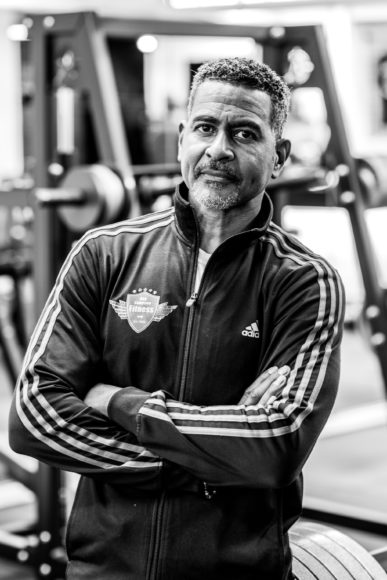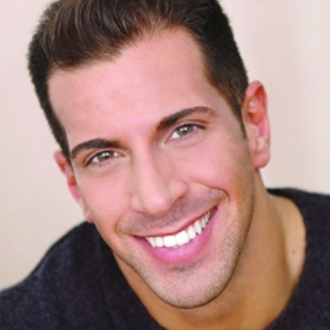Over the years there are certain people and situations that we can look back on as integral figures and influences in our lives. Raymond Simpson was one of the first professional trainers that I met when I was climbing the ranks in the industry. I consider him not only a mentor but a friend.
Born in Port of Spain, Trinidad, in 1962, he came to the United States in 1989 to study graphic design. He received an associate’s degree in art and advertising design and worked various jobs until entering the fitness industry, because he couldn’t get a job in design at the time. He has worked in fitness for 18 years in such top brands as New York Health & Racquet Club, Bally’s Corp. and Equinox. He has been an independent trainer for the last nine years.
He remembers as a teenager hearing things like:
- “Your athletic career is over once you’re in your 30s”;
- “When you hit 40, you’re over the hill”;
- And “50 is just plain ‘old.”
Now set to mark his 60th birthday this year, Ray thinks that none of those statements apply to him or countless others in their 50s. I recently sat down with him to get his thoughts on this mindset.
So has the landscape changed? And if so what do you attribute it to?
“For me, I have seen the deleterious effects that unhealthy lifestyle practices and poor choices have on many people. I didn’t want that to be me. But in broader terms, I believe the advances made in science, exercise science in particular, nutrition and wellness as a whole have afforded the ‘older”’population the opportunity to take a sip, if you will, from the fountain of youth. I think just like me, other people maybe saw their parents or other relatives become victims of an unhealthy lifestyle and with the prevention-better-than-cure mentality, exploited all of the newfound information to slow the aging process and enjoy a better quality of life in their later years.”
So, is this the demographic you cater to?
“Actually, most of my clients fall within the 40 to 60 age group, but I’ve also had clients in their 30s, 20s and even teens.”
Do you enjoy working with this demographic as opposed to college athletes? And if so, why?
“I enjoy training any age group or level of fitness, as each one provides its own challenges and so my sense of accomplishment would come from different places. People over 50 pretty much know what they want and generally have realistic expectations as to their training outcomes. They know that they don’t move or look the way they used to, and they’d like to change that and reduce the risk of any injury also. So when my 52-year-old client tells me that on vacation at a CrossFit gym he was giving guys in their 20s and 30s a run for their money; or a lady in her late 60s says she goes shopping in her closet, because now she can wear outfits from five years ago; or a man in his 60s say it’s the first time he’s squatted in years, these results give me a tremendous feeling of satisfaction. It’s about helping these clients get to a place where they feel younger by virtue of their improved level of fitness. Energized again, they feel confident and empowered.”
What advice would you give to someone in his/her 50s who may be hesitant about strength training? And why is it important?
“There’s a saying, all things being equal, the stronger athlete will prevail (paraphrase). The same applies in everyday life: You need to be strong, or at least increase your strength. The good news is that it’s never too late to start, the human body is incredible and as long as you’re consistent with your training, you will experience the difference. I’ve always said, ‘As long as you can move, you can improve.’ Starting can be daunting, so start with a goal, a reunion, vacation, that hike, lifting your grandkids, fill in the blank, but just get started.
“This is important because as we age, we lose muscle and strength. When we lose strength, our quality of life deteriorates, we become more dependent on others, eroding our feeling of independence and confidence. Loss of strength can also lead to decreased stability, which may increase the chances of falling and injury. There is also the case of osteopenia and osteoporosis. Again, strength training has proven to be beneficial in that regard. In short, strength training, no matter the age group, provides a plethora of benefits, but especially for those of us in our 50s and older.”
Lastly, how do you stay in shape and are there any challenges?
“I generally try to get in three to four days of strength training a week. My cardio is usually boxing, which includes some jump rope, shadow boxing, the heavy bag and a mile on the treadmill and some stretching. Flexibility and mobility are important factors as well.
“As for challenges, I realized that it takes a little longer to recuperate from those tough workouts and injuries now take their time to heal. So as I’ve gotten older and hopefully wiser, I check my ego at the door. I’m not competing with the young studs or trying to impress anyone. I do my thing and I’m just as happy to be injury free as if I gained five pounds of muscle.”
For more, visit raysimpsonfitness.com. And reach Giovanni at giovanniroselli.com.


